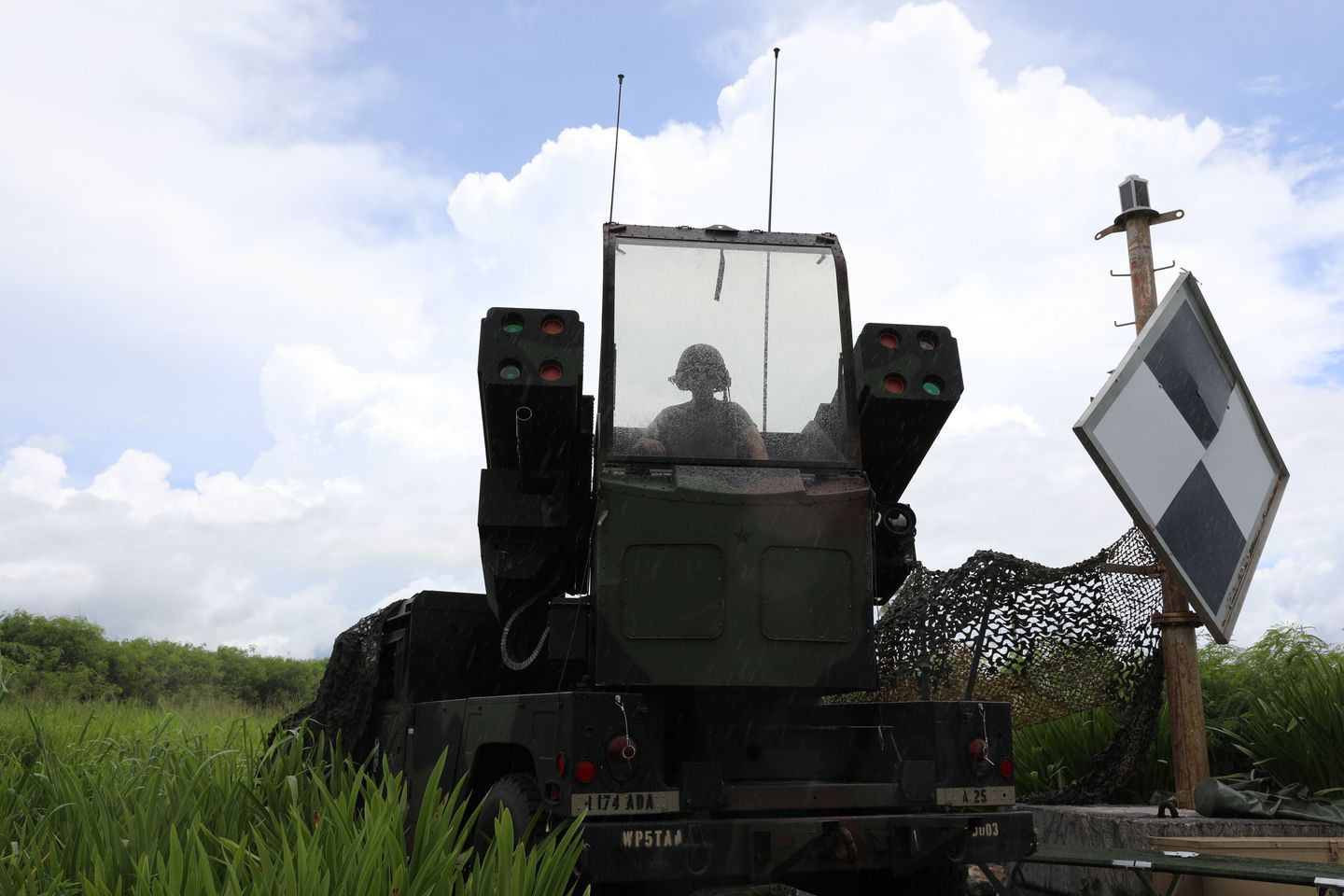

The Army is moving one of its newest missile defenses, the U.S.-Israeli-developed Iron Dome system, to the western Pacific island of Guam to counter threats from Chinese missiles.
The temporary deployment is being carried out in response to a provision of the fiscal 2019 Defense Authorization Act requiring the deployment of Iron Dome to an operational U.S. military region no later than the end of 2021, the Army said in a statement.
“Soldiers and equipment from the 2-43 Air Defense Artillery Battalion from Fort Bliss, Texas will deploy in order to fulfill those NDAA requirements, test the capabilities of the system, and further train and refine the deployment capabilities of air defenders,” according to the statement issued Wednesday from Hawaii, home of the Indo-Pacific Command.
Troops from the battalion are on Guam preparing for the Iron Dome system to arrive for exercises. The battalion is part of the Army’s 94th Air and Missile Defense Command in charge of all Army air defense assets in the Indo-Pacific region.
The system will be tested at Anderson Air Force Base, Guam, a major military hub in the Western Pacific and the testing will not involve live firing while on Guam, the statement said.
The testing will be carried out from mid-October through November, an Army spokesman said.
The Iron Dome missile defenses are used extensively by Israel in countering rocket attacks from Palestinian areas.
The high-technology defense system was designed together with the Pentagon and is used for short-range defenses against rockets and missiles with ranges of from 2.5 miles to 43 miles.
On Guam, the system could be used to counter short-range missile attacks from Chinese warships and submarines.
Iron Dome defenses will supplement the Army’s Terminal High Altitude Area Defenses on Guam, a long-range range missile defense system that has been deployed on the island for several years.
THAAD anti-missile interceptors are capable of knocking out incoming intermediate-range and medium-range missiles.
China last year tested its DF-26 intermediate-range ballistic missile in the South China Sea.
The 3,100-mile range DF-26 has been dubbed the “Guam killer” by official Chinese media and would be Beijing’s missile of choice during a regional conflict with the United States for strikes against Guam.
Israel’s use of Iron Dome was heavily tested in May after rapid-fire rocket attacks were carried out by the terrorist group Hamas from the Gaza Strip.
The missile defense system successfully intercepted the vast majority of rockets launched in salvos against Israel.
The Hamas attack attempted to overwhelm the Iron Dome system with a salvo of more than 100 rockets fired within minutes.
Israel has 10 Iron Dome batteries. The system was co-developed by Israel’s Rafael Advanced Defense Systems and Raytheon.
Following a political spat over U.S. funding to bolster Israel’s Iron Dome system, the House voted last month to provide $1 billion to Tel Aviv for the missile defense system.
Left-wing Democrats had opposed the Iron Dome funding.
